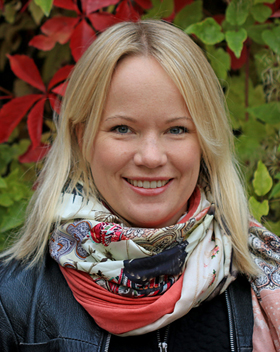Unveiling of Cell Atlas points to new understanding of health and disease
Researchers from Science for Life Laboratory at KTH have achieved another significant milestone in the wake of the completion of the human genome in 2001. At the 2016 American Society of Cell Biology Meeting in San Francisco earlier this month, they presented the Cell Atlas, an open-access interactive database with unparalleled high-resolution images which visualizes for the first time the location of more than 12,000 proteins in cells.

The Cell Atlas opens the way for “spatial proteomics”, an exciting new discipline which is expected to lead to a fundamental expansion in our understanding of human health and disease.
Emma Lundberg , an associate professor at KTH who works at the Science for Life Laboratory , is responsible for Cell Atlas project, which is an initiative within the framework of the Human Protein Atlas. She says that the Cell Atlas will play a key role in the exciting new area of spatial proteomics.
“In order to expand our understanding of the workings of human cells from a holistic point of view, in particular in the context of health and disease, detailed knowledge about the underlying molecular system is needed,” Lundberg says.
KTH Royal Institute of Technology Professor Mathias Uhlén , who is Director of the Human Protein Atlas, says that the next step after the genome project, which characterized the number of human protein-coding genes, is to clarify the function of these proteins.
"Being able to show the location of human proteins in time and space with subcellular resolution is an essential first step towards gaining new insights into protein function, Uhlén says.”
The Cell Atlas displays high resolution, multicolour images of immunofluorescent stained cells. With more than 12,000 human proteins mapped to 30 different cellular structures, the Cell Atlas provides spatial information on protein expression patterns at a fine subcellular level.
The analysis reveals a surprisingly complex cellular architecture with more than half of all proteins localized to multiple compartments. Furthermore, a significant portion was found to exhibit variation in expression at a single cell level.
In a novel twist, the project also enlisted the help of online gamers. CCP Games, Massively Multiplayer Online Science (MMOS), Reykjavik University, and the Cell Atlas team jointly developed a mini-game, “Project Discovery”, for EVE Online gamers.
“At any time and place in EVE Online, players are able to play the mini-game, Project Discovery, and categorize the protein expression patterns from Cell Atlas images into different organelle categories,” says Lundberg. “This was a help for us in classifying organelle substructures and refining the details in the Cell Atlas.”
The Human Protein Atlas project was started in 2003 by Professor Mathias Uhlén and is funded by the Knut and Alice Wallenberg Foundation. Primarily based in Sweden, the Human Protein Atlas project involves the joint efforts of KTH, Uppsala University, Uppsala Akademiska University Hospital and, more recently, Science for Life Laboratory, which is based in both Uppsala and Stockholm. Formal collaborations are with groups in India, South Korea, Japan, China, Germany, France, Switzerland, USA, Canada, Denmark, Finland, the Netherlands, Spain and Italy.
The Cell Atlas can be viewed at www.proteinatlas.org/ .